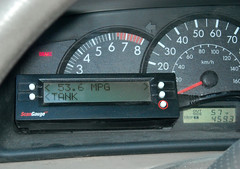
- Image by Paul Garland via Flickr
How many people would buy a car without knowing its estimated mileage? Comparatively, how many people would build a building without knowing an estimated energy performance?
While all consumers have documented miles per gallon estimates for their vehicles, almost no building owners know how much energy their building uses, or what are reasonable amounts of energy for a building like theirs to consume. This remains true in spite of the fact that buildings are very often the largest and longest term investments that people ever make.
As building designers are beginning to more frequently estimate building annual energy consumption and costs, it is rarely the case that designers go the next step and compare this predicted performance to actual consumption based on fuel bills. And almost never, does the building owner have clear numbers that demonstrate how their building will or does perform compared to other similar buildings. In order to do this one must track energy consumed, divide this number by the size of the building, and then compare this number to benchmarks. This resulting number, found from taking total energy consumption and dividing by building size, is known as the Energy Utilization Index (EUI).
Expecting improvement in energy performance without metrics and measurement such as these is like believing we will find free energy. We must develop a clear picture of how our buildings perform individually as well as collectively to be able to set goals in the future of where we should be heading. There is obviously no point in setting a 50% reduction in energy usage goal if we do not know what we are starting from.

What would it take to take an inventory and develop an Energy Utilization Index (EUI) for the existing buildings in the state of Vermont?
In the UK they are working on setting an aggressive goal to become net zero within 10 years, and the government is supporting the goal with hard-cash incentives for homeowners. (Zero-carbon building in the UK http://bit.ly/cg0m6u) What would be the first step toward doing the same thing here in Vermont?